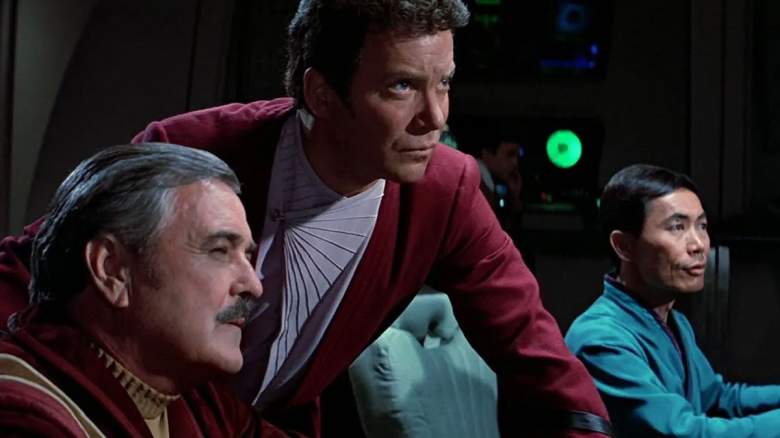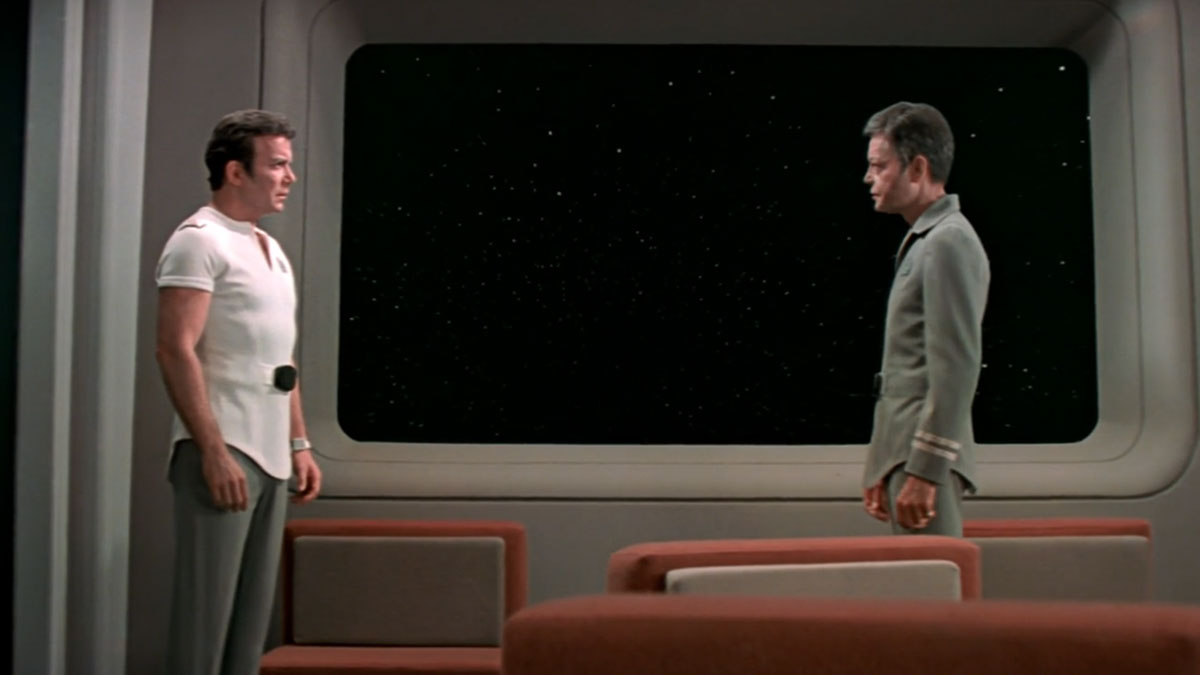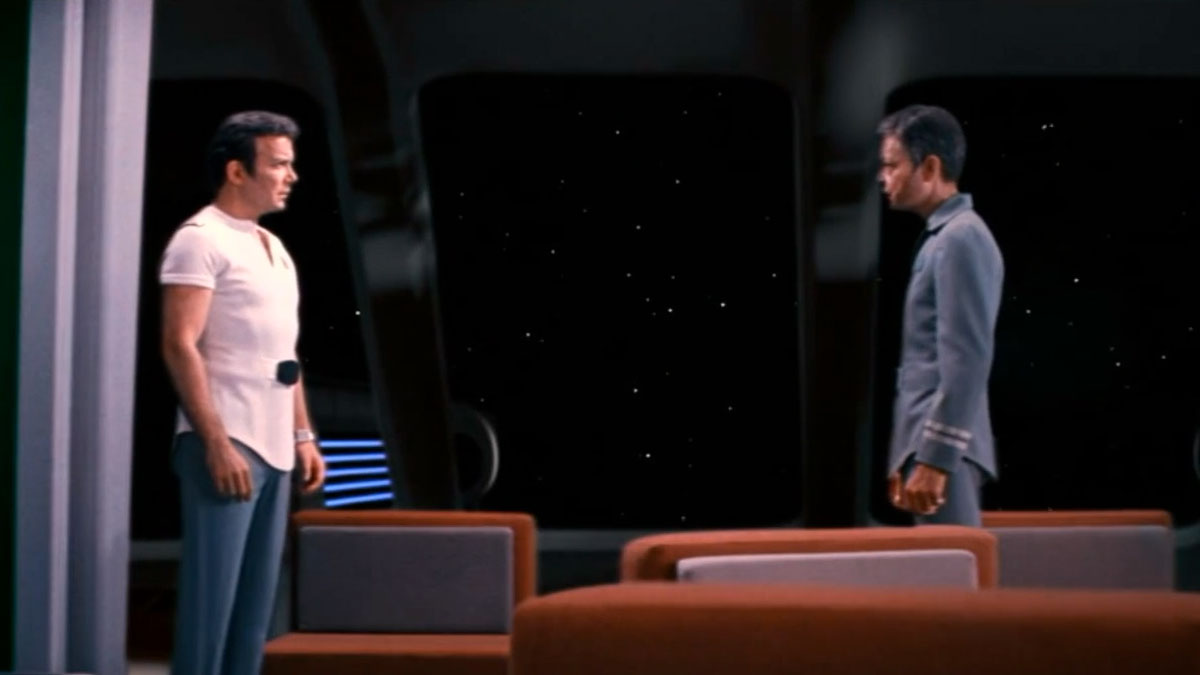
Paramount Stealing the Enterprise
This past “First Contact Day,” which was April 5, 2022, Trekkies around the nations were treated to a new and revamped version of the first film from the franchise. On that day, viewers finally got to see what Director Robert Wise meant for all to see back in December 1979. “Star Trek: The Motion Picture” was rereleased on Paramount+ in incredible 4K resolution. Later, the film will be available for purchase on 4K Ultra-High Definition Blu Ray.
Heavy interviewed Daren Dochterman, one of the minds who helped bring “The Motion Picture” up to 4K. He supervised all of the effects shots and worked with Wise back in 2001 when the director returned to Paramount to re-edit his film. That version became known as the “Star Trek: The Motion Picture – The Director’s Edition.”
In an interview, Dochterman told Heavy that what was seen in theaters in 1979 was essentially a “rough cut” because Wise and the rest of the filmmakers were on such a tight deadline.
The 4K Updated ‘Motion Picture’ Comparison
In recent years, fans of “Star Trek” have been enjoying a few moments like the release of the 4K “Motion Picture – Director’s Edition.” Paramount decided to rescan the original negatives and update the special effects for “The Original Series.” That project was made available to fans on high-definition Blu-ray discs. For the first time, fans of the original 1960s-era show could see William Shatner’s Captain Kirk and Leonard Nimoy’s Spock in HD.
Similarly, fans of “Star Trek: The Next Generation” saw their favorite series upgraded to blu-ray as well. All seven seasons of TNG are available in HD for viewing.
All of this scanning and upgrading might be a novelty to fans of “Star Trek,” but for those who follow that other space opera franchise, this sort of thing is nothing new. For years, “Star Wars” creator George Lucas made adjustments and updates to his original trilogy of films. He added scenes to those films using new computer graphics, like the new dancers in Jabba’s Palace in “Return of the Jedi.” He gave detail where there was none — a great example would be when backgrounds and windows were added into Cloud City in “Empire Strikes Back.”
Comparing the New & Old ‘The Empire Strikes Back’
Some of this was done with the new version of “The Motion Picture.” The scene where Kirk, Spock, and McCoy (DeForest Kelley) meet about the threat to Earth had some extra details added into the background behind the actors (see the images below). If the effects team who worked on the 4K restoration can add scenes and clean things up for TMP — why not do the same for “The Search for Spock?”
For many, the cheapness in “Star Trek III” cannot be ignored. While the story has its rough spots — it was actually supposed to be much different — the way the production staff cut corners stands out. Among those scenes, which did not get the best effort for the interior of the trade ship.
This was seen when the Klingon Valkris (Catherine Shirriff) transmitted the Genesis data to Kruge (Christopher Lloyd). Instead of an actual spacecraft, the inside of the ship looked like a bunch of boxes with a fishnet tossed over top.
‘Star Trek III: The Search for Spock’
Other fans, like Dochterman’s “Inglorious Treksperts” co-host, Mark A. Altman, compare the on screen graphics from the U.S.S. Excelsior to the Atari 2600. Meaning that the way the crew of the Excelsior interacted with their computers was not up to 23rd Century standards. The Treksperts spent two entire podcasts breaking down all of the problems they saw with “Star Trek III.”
Trek Fan Gilker Kimmel would have agreed with Altman. In a separate article, Kimmel wrote that “the Genesis Planet could’ve been lifted from any of the third season ‘TOS’ away mission sets, which is really saying a lot considering how poorly that season was financed.”
Heavy asked Dochterman if a team of visual effects experts could “fix” some of the problems with “Star Trek III,” to perhaps create a Director’s Edition of that film like they were able to for “The Motion Picture.”
“The main problem with that is, first of all, we don’t have the director of the film available,” Dochterman said. The director of “Star Trek III” is the late Leonard Nimoy.
Original vs. 4K TMP

ParamountA scene from the 1979 version of ‘The Motion Picture’

ParamountA scene from the updated, 4K version of ‘The Motion Picture’
“The problems that I have with ‘Star Trek III,’ in specific, are not things that are visual mistakes,” said Dochterman. “I think that the problem is the entire tone of the film. It comes across in the performances and in how the story is told. And I don’t think that can be ‘fixed’ by anyone who doesn’t go back and just reshoot the whole movie.”
“One of the lucky things that we had was that we had Robert Wise to guide us to what he would have done with an extra few weeks of post-production,” said Dochterman. “But I think the problems with ‘Star Trek III’ can’t be fixed with visual effects.”
“It’s not a bad film,” said Dochterman. “It’s just that we wished it was better.”
READ NEXT: ‘Star Trek: Discovery’ Explains Why Harry Kim Never Got Promoted